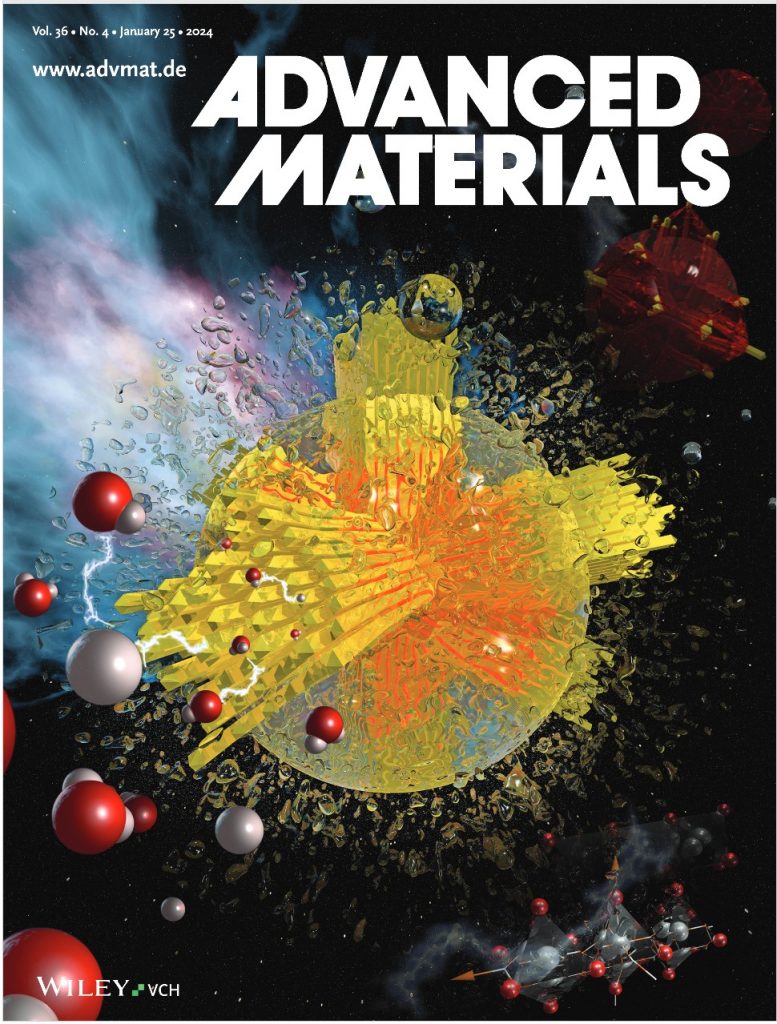Collaborations with the Center for Electron Microscopy and Microanalysis, Department of Surface Engineering and Chemical Institute.
https://onlinelibrary.wiley.com/doi/10.1002/adma.202308027

In the article Mnemonic Rutile-Rutile Interfaces Triggering Spontaneous Dissociation of Water (doi: 10.1002/adma.202308027), Vesna Ribić, Vanja Jordan, Aleksander Rečnik, Sandra Drev, Janez Kovač and Goran Dražić demonstrate that epitaxial rutile fibers grown in acidic conditions are capable of conveying their structurally encoded properties into a neutral medium when re-immersed. Their very specific translation state triggers spontaneous cracking of the O─H bond resulting in water dissociation.
Water interaction with mineral surfaces is a complex living system decisive for any photocatalytic process. Resolving the atomistic structure of mineral–water interfaces is thus crucial for understanding these processes. Fibrous rutile TiO2, grown hydrothermally on twinned rutile seeds under acidic conditions, is studied in terms of interface translation, atomic structure, and surface chemistry in the presence of water, by means of advanced microscopy and spectroscopy methods combined with structure modeling and density functional theory calculations. It is shown that fibers while staying in stable separation during their growth, adopt a special crystallographic registry that is controlled by repulsion forces between fully hydroxylated and protonated (110) surfaces. During relaxation, a turbulent proton transfer and cracking of O─H bonds is observed, generating a strong acidic character via proton jump from bridge ─OHb to terminal ─OHt groups, and spontaneous dissociation of interfacial water via a transient protonation of the ─OHt groups. It is shown, that this specific interface structure can be implemented to induce acidic response in an initially neutral medium when re-immersed. This is thought to be the first demonstration of quantum-confined mineral–water interface, capable of memorizing its past and conveying its structurally encoded properties into a new environment.